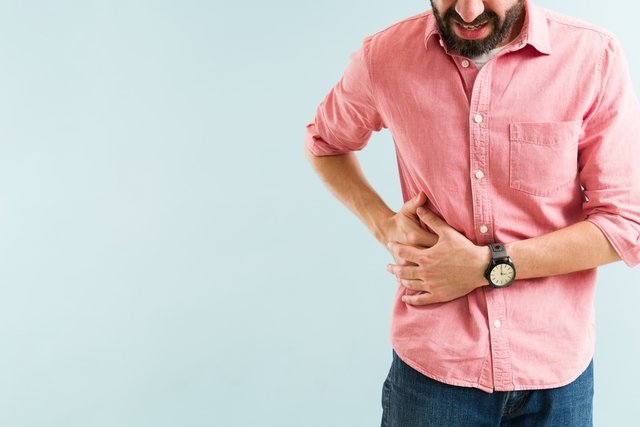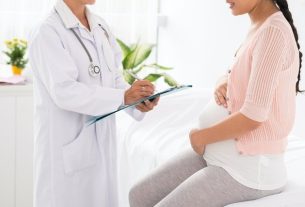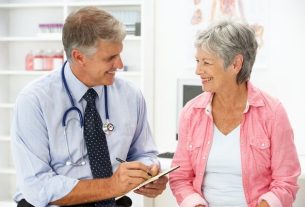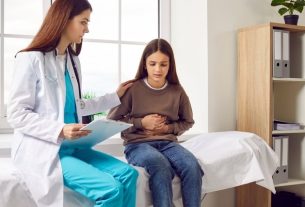Gallstones may not cause symptoms for months. However, when stones increase in size or block the bile ducts, symptoms such as severe abdominal pain, loss of appetite and yellowish skin may appear.
Gallstones are generally caused by difficulty emptying the gallbladder and by excess cholesterol in the bile, a compound that helps in the digestion of fat, leading to the formation of small crystals. Understand more about gallstones.
The diagnosis of gallstones must be made by a general practitioner, surgeon or gastroenterologist, by evaluating the symptoms and carrying out tests, such as ultrasound, and the treatment of this condition may include the use of medication or surgery.

Symptoms of gallstones
The main symptoms of gallstones are:
1. Severe pain on the right side of the belly
The intense pain, known as biliary colic, appears in the right region and in the upper part of the belly, and occurs mainly up to 1 hour after a meal.
This pain appears suddenly and may gradually increase in intensity and last only 30 minutes or a few hours. Furthermore, the pain can also spread to other regions of the body, such as the mid-belly region, right arm and collarbone.
2. Fever
When a gallstone becomes stuck in the cervix, one of the parts of the gallbladder, it can cause inflammation in this organ, known as cholecystitis, causing fevers of 38 ºC or more and chills.
3. Frequent diarrhea
Diarrhea can happen because bile, which is used to digest fat, cannot leave the gallbladder and reach the intestine. This causes an increase in fat in the stool, making it softer and bulkier.
4. Nausea and/or vomiting
As the gallbladder is an organ that participates in digestion, gallstones can cause nausea and/or vomiting, especially after meals.
5. Loss of appetite
Loss of appetite can happen due to discomfort after meals, which reduces the desire to eat. Furthermore, loss of appetite also occurs because the digestive system is having difficulty digesting food.
6. Greenish-yellow skin and eyes.
The greenish-yellow color of the skin and eyes, also known as jaundice, occurs due to the accumulation of bilirubin in the blood. Under normal conditions, bilirubin is produced by the liver and stored in the gallbladder, then released with bile into the intestine and eliminated in the feces.
However, when it is produced in excess or when it cannot be eliminated properly, bilirubin accumulates in the blood, giving rise to the yellowish color.
Online symptom test
To find out the chance of having gallstones, select the symptoms presented in the following test:
What to do in case of suspicion
In the presence of symptoms suggestive of gallstones, it is recommended to consult a gastroenterologist or a general practitioner, so that the symptoms can be evaluated and tests carried out, such as an abdominal ultrasound, to confirm the presence of gallstones.
If the pain is constant and/or if there is fever and vomiting in addition to the pain, it is important to go to the emergency room.
In some cases, more specific tests such as magnetic resonance imaging, scintigraphy and computed tomography can also be used to identify whether the gallbladder is inflamed or not.
Main causes
Gallstones are formed by changes in the composition of bile, which can happen due to a diet rich in fat and low in fiber, high cholesterol, diabetes, high blood pressure, sedentary lifestyle, prolonged use of contraceptives and/or family history.
Furthermore, due to hormonal changes, women are more likely to have gallstones than men. Find out more about the causes of gallstones.
How the treatment is carried out
The treatment of gallstones must be guided by a gastroenterologist or general practitioner and is carried out according to the size of the stones and the presence or absence of symptoms.
People with small stones or those who have no symptoms often use stone-dissolving medications, such as ursodiol. See more details about treatment for gallstones.
In the case of people with frequent symptoms, surgery to remove the gallbladder may be indicated. There is also treatment with shock waves that break gallstones into smaller stones, as is done in cases of kidney stones. Furthermore, it is important to avoid a diet rich in fat, such as fried foods or red meat, and practice physical activity regularly.
Find out what nutrition should be like for gallstones in the following video:

Sign up for our newsletter and stay up to date with exclusive news
that can transform your routine!
Warning: Undefined array key "title" in /home/storelat/public_html/wp-content/plugins/link-whisper-premium/templates/frontend/related-posts.php on line 12
Warning: Undefined array key "title_tag" in /home/storelat/public_html/wp-content/plugins/link-whisper-premium/templates/frontend/related-posts.php on line 13



